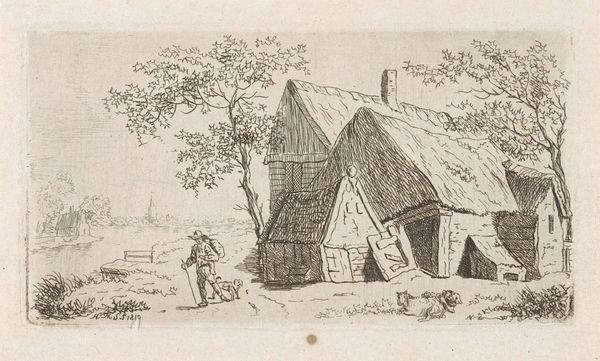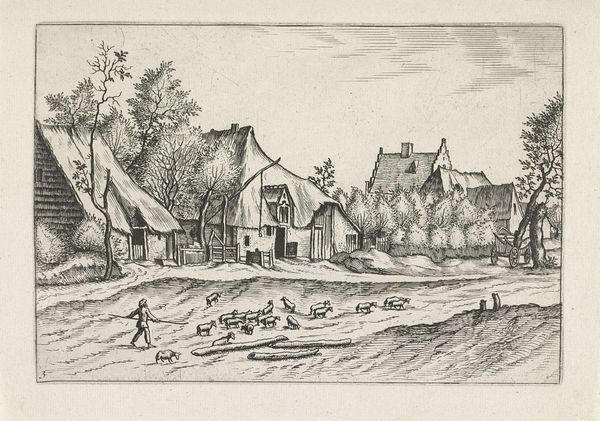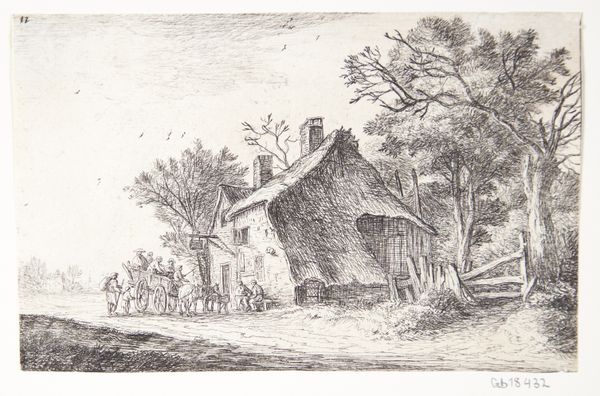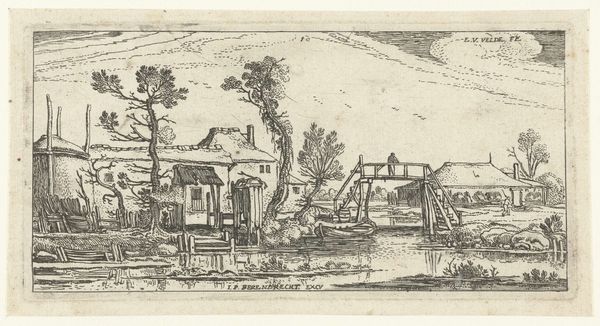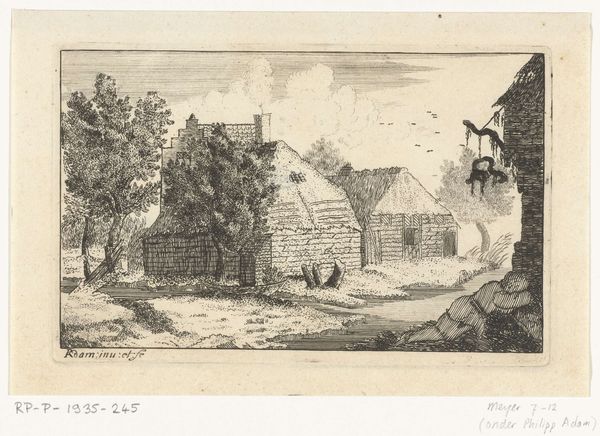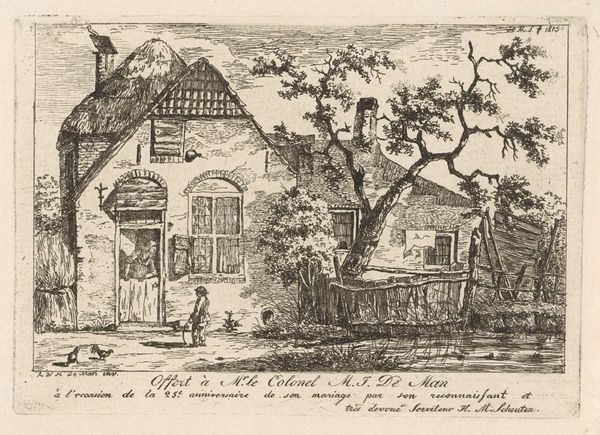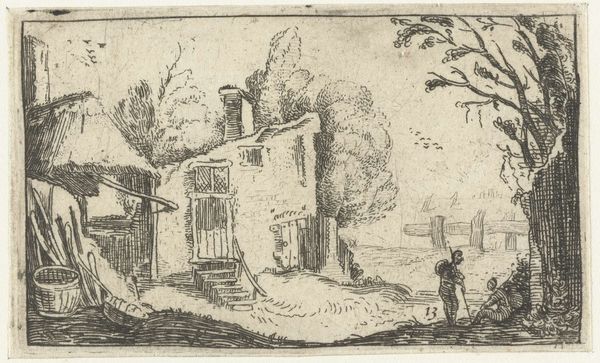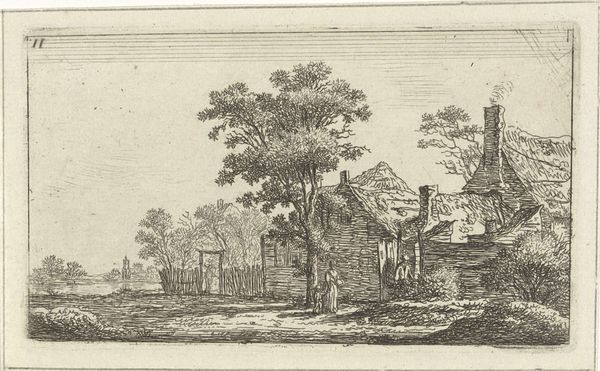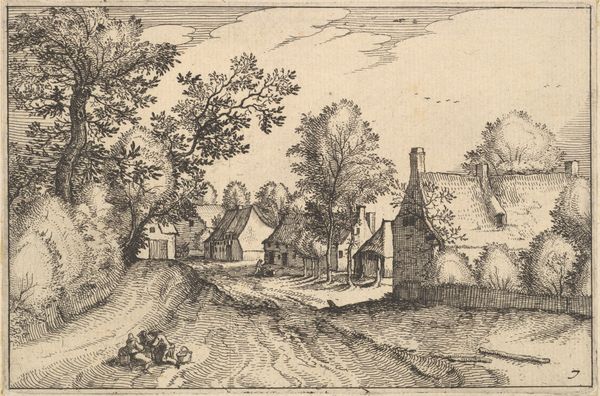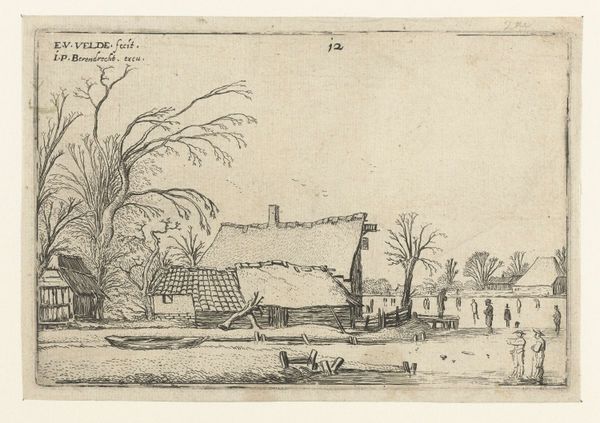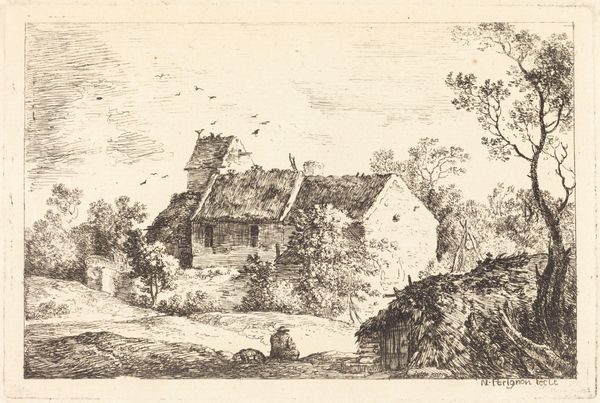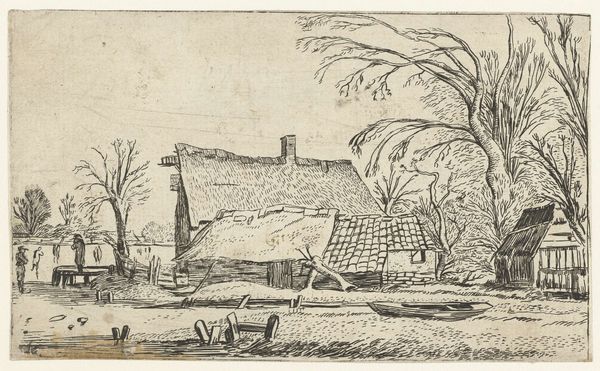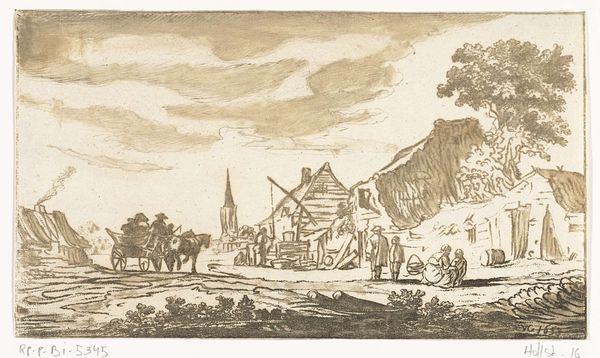
drawing, paper, ink
#
drawing
#
dutch-golden-age
#
landscape
#
paper
#
ink
#
romanticism
#
genre-painting
Dimensions: height 58 mm, width 91 mm
Copyright: Rijks Museum: Open Domain
Editor: This is Gerrit Lamberts’ “Landschap met een wagen bij een herberg,” or “Landscape with a cart near an Inn,” likely created between 1828 and 1837. It’s a small ink drawing on paper. It feels very... folksy, almost like a glimpse into everyday life back then. What strikes you most about it? Curator: Well, looking at it historically, I am interested in the inn itself. In Dutch Golden Age and Romantic era landscapes, inns often served as important social and economic hubs. What can we infer from the presence of a rather active Inn in this ink drawing? Editor: Hmm, that it’s more than just a pretty picture? Curator: Exactly! It invites questions. Was Lamberts simply documenting rural life, or was he commenting on something? Considering the period, post-French Revolution, where do you think such depictions of common life fitted within the Dutch social fabric? Did it idealize it? Criticize it? Both? Editor: I see what you mean. The scene is bustling but…rough. Not idealized. The inn seems a bit ramshackle, not grand at all. And there are many travellers… Curator: Precisely! Consider the function of genre painting at the time. Did it serve a political purpose, perhaps reinforcing a sense of national identity through the depiction of everyday life? And for whom was this image created? Who were the consumers of such imagery at this time? Was it for the rising middle class seeking to connect with their rural roots, or perhaps a more aristocratic clientele with nostalgic yearnings for a simpler past? Editor: So it's less about the pretty scenery, and more about what the scenery represents within Dutch society. That makes me rethink my first impression! Curator: Absolutely. By looking at its social context, we gain a richer understanding of the image. We start seeing beyond the ink on paper and see the era itself. Editor: Thanks, this has definitely changed my perspective and the questions I will now bring when I view works.
Comments
No comments
Be the first to comment and join the conversation on the ultimate creative platform.
